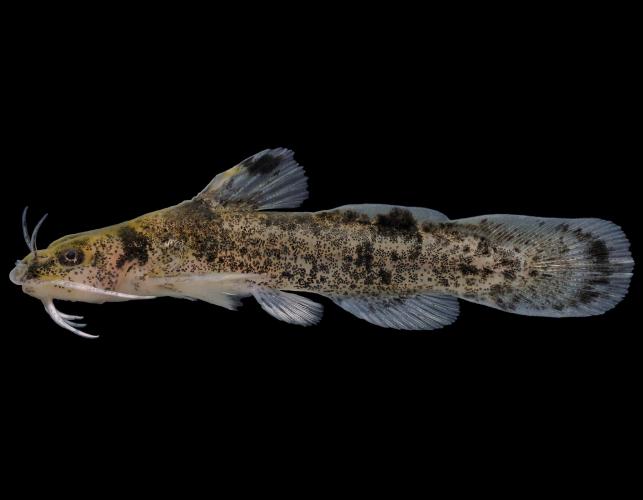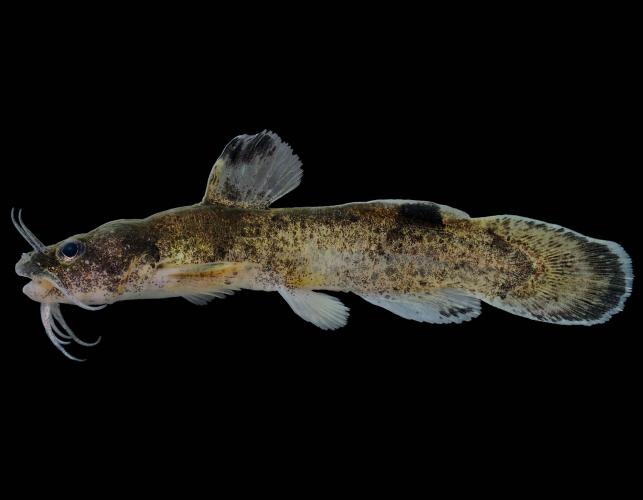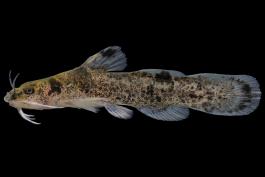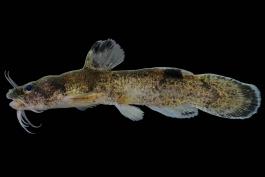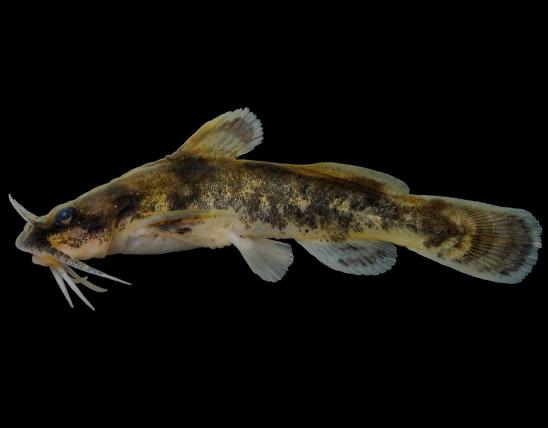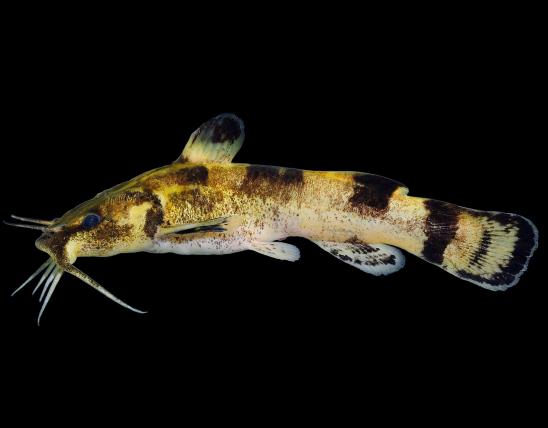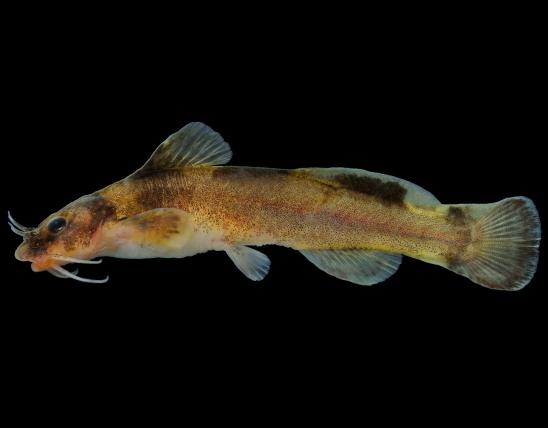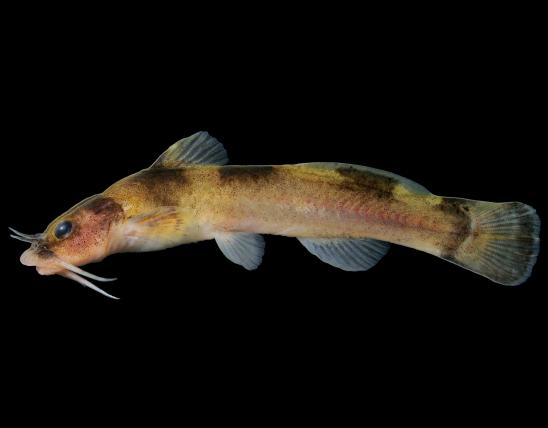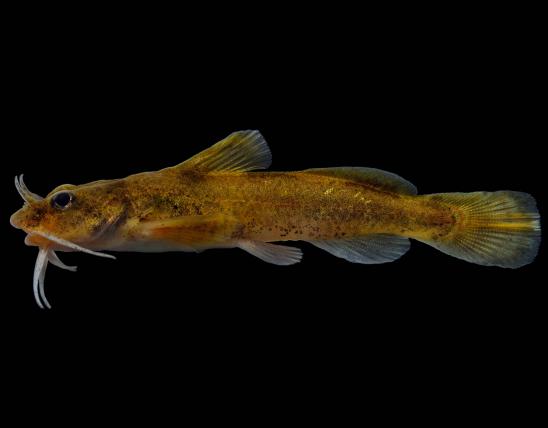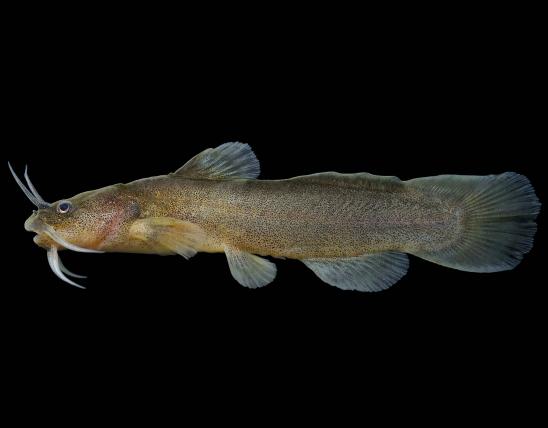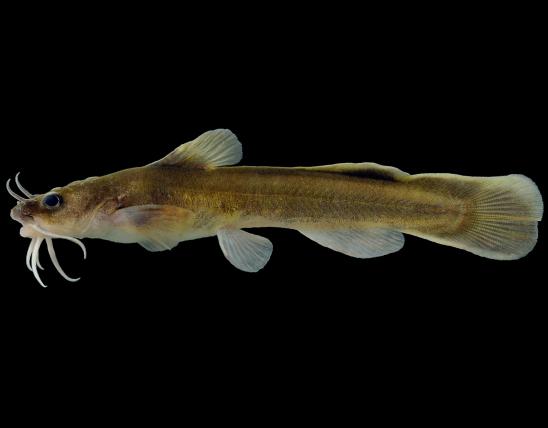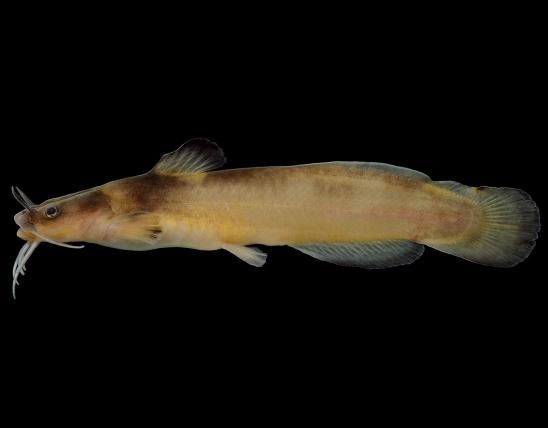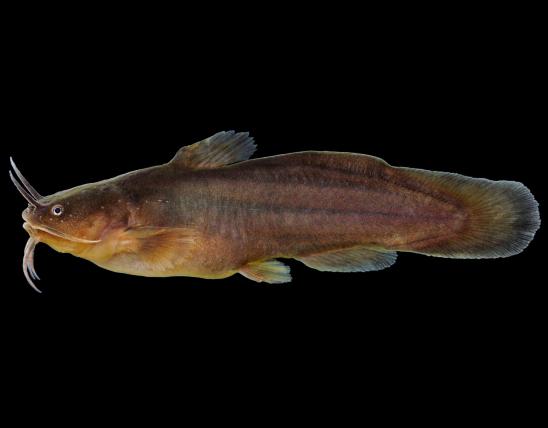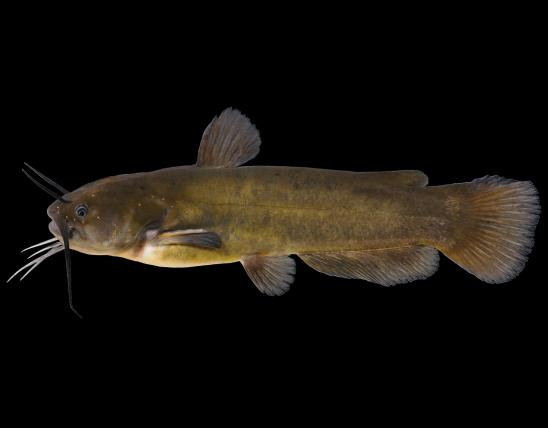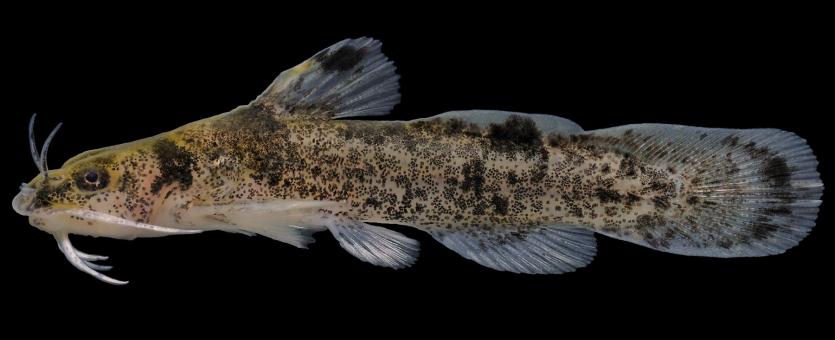
The brindled madtom inhabits many of the same lowland streams and ditches as the tadpole madtom, and is nearly as common. Brindled madtoms are more often found in pools, however. The species also inhabits the Spring River system in southwest Missouri.
Madtoms, as a group, are small, secretive catfishes that most people never see. The key identifier for madtoms has to do with the adipose fin (the small, fleshy fin that is present on the midline of the back just ahead of the tail fin). In madtoms, the adipose fin forms a low, keel-like ridge without a free, flaplike lobe along the trailing edge. The adipose may be connected to the tail fin, or it may have (at most) a slight notch in between. (In our other catfishes, the adipose fin forms a free, flaplike lobe, widely separate from the tail fin.)
The brindled madtom is small and moderately chubby. It can be distinguished from other Missouri madtoms by the following:
- The pectoral spine has prominent, sawlike teeth along the rear margin.
- The body and fins are profusely mottled with dark blotches and bars.
- The upper jaw projects beyond the lower jaw.
- The tooth pad on the upper jaw lacks backward extensions.
- There is no broad black bar across the base of the tail fin, but often there is a narrow dark line shaped like a question mark.
- The dorsal fin has a dark blotch near the outer margin. The blotch extends only across the first 4 fin rays.
- The head length (from tip of snout/mouth to back of gill cover) goes fewer than 3.5 times into the standard length (from tip of snout/mouth to base of tail fin).
- The distance from the tip of the tail fin to the notch between the tail fin and adipose fin goes fewer than 2 times into the distance from the notch forward to the front of the dorsal fin base.
The back and sides are yellowish brown with dusky mottlings. The back has 4 dark crossbars. The belly is pale yellowish white. The fins are marked by prominent blackish bands and blotches.
Most madtoms possess a mild venom that is associated with the pectoral and dorsal spines. When introduced into a puncture wound produced by the spine, the venom causes a painful reaction. The spines are often erected and locked in place when the madtom is alarmed, increasing the chance of a puncture. The venom is not considered dangerous to people, and the chances of being “spined” are not great if the possibility is kept in mind when handling a madtom. If you’ve been jabbed by a madtom spine and think you’re having a severe reaction, seek medical attention.
Similar species: The Neosho madtom (N. placidus) is similar but has the dark bar or blotch at the base of the adipose fin extending only into the basal half of fin (not all the way to or very near to the fin margin, as in the brindled); also, the Neosho madtom never has a narrow dark line at the base of the tail fin shaped like a question mark. The checkered madtom (N. flavater) has a prominent dark bar across the body near the base of the tail fin; sharply defined dark bars; only slight mottling; and the dark tip of the dorsal fin extends across the fin except for the last fin ray.
There are about 30 species of madtoms (in the genus Noturus), and all occur in the central and eastern United States and nearby parts of Canada. In Missouri, 10 species of madtoms have been recorded. It can be difficult to separate the different species of madtoms using the traditional methods of fish ID (counting fin rays, for instance, or comparing ratios of body-part measurements). Noting differences in pigmentation (such as dark bars or patches) can help, but such coloration often varies by particular locality and habitat (such as amount of vegetation, turbidity, or different substrates). Color can also vary by a fish’s health, mood, breeding condition, sex, and individual genetics, and dead fish may show little coloration at all. Molecular (DNA) date is being used more and more as a way to separate the species; of course, it is not very useful in the field. Geography can be a good clue for species IDs, since different species may be restricted to certain stream systems and never occur in others.
Adult length: commonly 2¼–3½ inches; maximum of about 4 inches.
Two separate areas in Missouri: the lowlands of southeastern Missouri, and the Spring River system of southwestern Missouri.
Habitat and Conservation
The brindled madtom occurs in two separate areas of Missouri. Its main area of occurrence is in the lowlands of southeastern Missouri and nearby parts of the Ozarks. The other area is in the Spring River system of southwestern Missouri, where the Prairie and Ozark regions meet.
This madtom is locally abundant in a few southeast lowland ditches, but otherwise it occurs in low populations densities over most of its Missouri range.
The brindled madtom inhabits streams having low or moderate gradients and a permanent flow of warm, moderately clear water. It usually is found in pools having slight current and gravelly or sandy bottoms. Often, considerable quantities of detritus, such as sticks and leaves, are present.
Like most other madtoms, this species is nocturnal and secretive, getting most of its food on or near the bottom.
Food
The brindled madtom hunts on the bottom at night, using its sensitive barbels to touch and taste for food. Its diet consists mostly of immature aquatic insects, including midges, black flies, mayflies, and caddisflies, and also adult aquatic sowbugs.
Life Cycle
In southeast Missouri, this madtom spawns during late spring and summer. Females full of eggs and females that had recently spawned have been collected there in late May. In nearby Illinois, males guarding nests of eggs were observed in late June. Nests are excavated beneath flat rocks in pools, but brindled madtoms have known to nest in beer cans. Females become sexually mature in their second summer of life, while males mature in their third summer. Few, if any, survive a fourth summer.
Human Connections
Although madtoms are not useful to people as food or game, they are interesting animals that contribute to the diversity and health of the aquatic ecosystems they inhabit.
People with aquariums will understand the fascination of small fishes. Madtoms can make good aquarium subjects, although they tend to remain hidden. They usually can be coaxed into the open with food, especially under low illumination at night, when they are normally active. A benefit of madtoms is that they do not outgrow a tank the way our other native catfish do. Nongame fishes that are not otherwise protected may be collected for aquarium purposes by the holder of a fishing permit, using techniques and in numbers specified for bait collecting in the Wildlife Code of Missouri.
Ecosystem Connections
By feeding on immature midges and mayflies, the brindled madtom serves as a check on the populations of those insects. The presence of stout, sawtoothed, venomous spines reminds us that many animals seek out the brindled madtom as prey.
Madtoms are part of the complex web of feeding relationships that occur in streams. Though small, madtoms are often abundant in streams, and their populations represent a significant link in the food chain.
